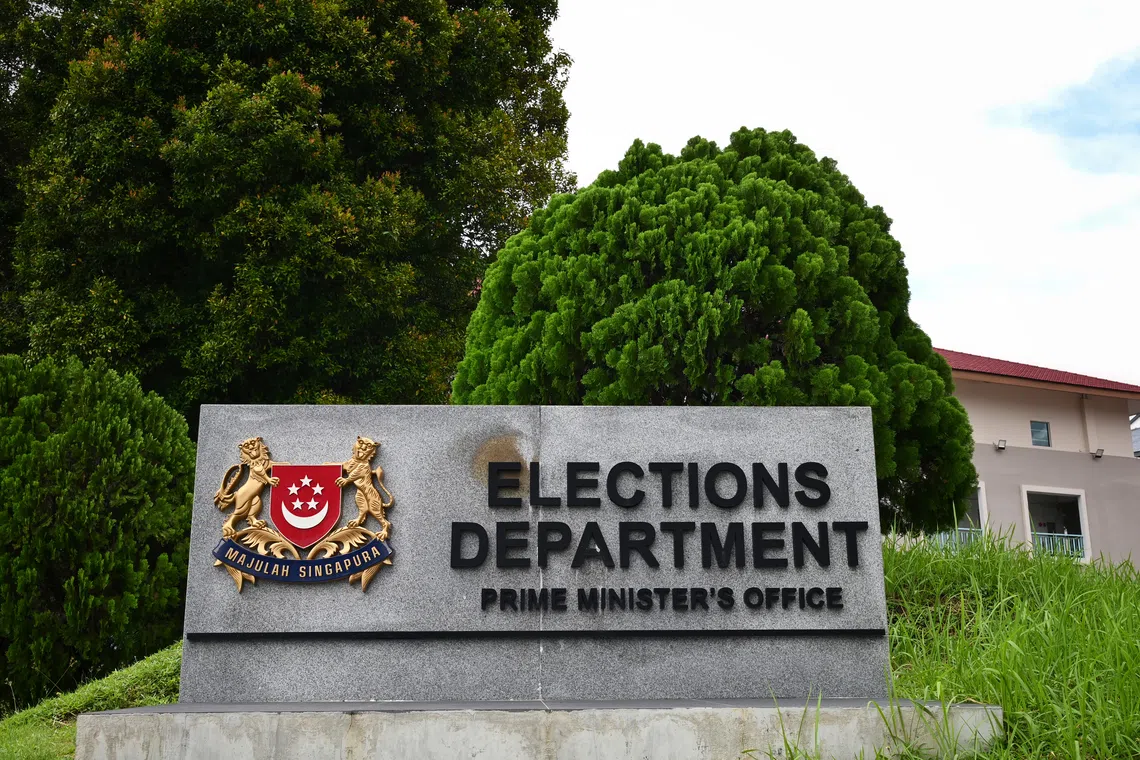Elections Department removed 227 ads that broke the rules during GE2025
Sign up now: Get ST's newsletters delivered to your inbox

All 11 parties which contested GE2025 had traditional election advertising material removed between April 15 and May 3.
ST PHOTO: KUA CHEE SIONG
Follow topic:
SINGAPORE – The Elections Department (ELD) removed 227 pieces of political advertising that broke the rules during the May general election period.
All 11 parties which contested GE2025 had pieces of traditional election advertising – banners, flags or posters – removed between April 15, the day the Writ of Election was issued
The party with the most advertisements removed was Red Dot United with 60, followed by the Progress Singapore Party with 46.
The ruling PAP was next with 37, followed by the Singapore People’s Party with 33. The Workers’ Party had 13 removed, and the remaining parties had between one and 10 removed.
Independent candidate Jeremy Tan, who contested Mountbatten SMC, had six removed while Mr Darryl Lo, who ran as an independent in Radin Mas SMC, had none taken down.
Minister-in-charge of the Public Service Chan Chun Sing gave these numbers in a written parliamentary reply on Sept 26 in response to questions from WP MP He Ting Ru (Sengkang GRC).
He was responding on behalf of Prime Minister Lawrence Wong.
Ms He had asked how many complaints were received on the contravention of traditional election advertising rules and how many such complaints were investigated by ELD.
She also asked how many rectification notifications were issued and how many election ads were removed for each political party.
The ELD website states that under the rules, traditional election advertising – including banners, flags and posters – must follow a series of regulations to do with size, quantity, location, and manner and period of display.
They must also not contain illegal content such as seditious material, or material that may cause alarm and distress.
Mr Chan, who is also Coordinating Minister for Public Services, did not elaborate on the ways the removed ads broke these rules.
He added that the ELD received and investigated 2,561 reports of possible contraventions of political advertising laws during the general election and followed up on 1,840 of them.
Of these, 1,595 reports were lodged between the day the Writ of Election was issued and Cooling-off Day on May 2.
Candidates and their election agents were notified to rectify the breaches within three hours, he said.
The ELD carried out enforcement against 100 reports – which involved 139 pieces of advertising – that were not rectified within the stipulated time.
For the remaining 245 reports made on Polling Day, no rectification notification was sent, he added.
ELD had assessed that it would not be appropriate to ask them to follow up on the rectification by the start of polls, given the inclement weather that morning, he added.
Instead, ELD went on-site to verify complaints, and removed 88 ads that were in breach of the rules.
ELD’s website states that candidates are required to pay $50 if unauthorised pieces of traditional election advertising are removed or stopped from being publicly displayed by the Returning Officer or ELD’s contractor.
In a separate question, Ms He asked if promotional material with photos of grassroots advisers and their initiatives maintained during the GE2025 campaign period contravened rules on traditional election ads, if the grassroots advisers were also running as candidates.
PAP candidates and MPs are traditionally designated as grassroots advisers under the People’s Association in the constituencies they are contesting or representing.
Responding on behalf of PM Wong, Mr Chan said that any posters, flags or banners displayed during the election period to promote the electoral success of a candidate or political party would constitute election advertising.
They would therefore be required to comply with the election advertising rules.
If a grassroots adviser is also a candidate, whether pre-existing displays maintained during the period count as election advertising would depend on the context, intention and timing of these displays, he added.
“For instance, banners containing expressions that can be reasonably regarded as appealing for continued support from residents, so that he/she can serve them as MP, could constitute election advertising,” he said.
They would then need to comply with the rules for continued display during the election period, he said.
However, existing banners that continue to be displayed during the election period which serve an unrelated purpose are unlikely to constitute election advertising, he added.
This is because they can be reasonably regarded as not being intended to promote the electoral success of a political party or its candidates, he said.
Examples of such banners include welcome banners with a picture of grassroots advisers or greetings for various festivals, he added.


